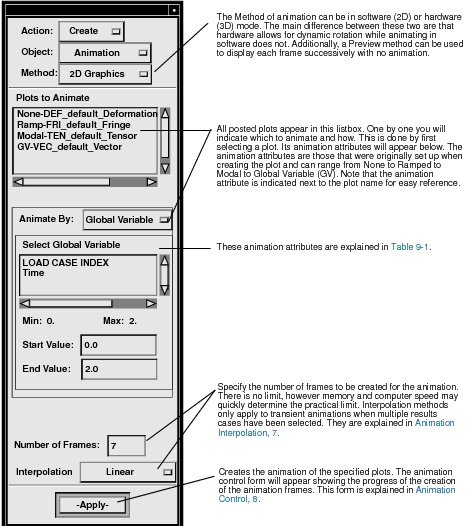

Option | Description |
None | If no animation has been initially set up when the plot was created, this is the animation attribute that it will have. None indicates that this plot will not animate. If you do not wish for a plot to animate, yet it is posted to the viewport, then this attribute must be set to None. The word None- will be placed next to the plot name to indicate that no animation will occur for the plot. |
Modal | Setting a plot to Modal indicates that you want a modal style animation. This is common for modal analysis results. Modal style animations oscillate from the maximum results value to the negative of the maximum value, or in other words, it is like a fully reversed loading situation that oscillates like a sine function. When specifying a modal animation you can also set an angle offset. This sets up a phase shift in your animation. For example if you want to turn a sine wave oscillation into a cosine oscillation, use an offset angle of 90 degrees. The word Modal- will be placed next to the plot name to indicate that no animation will occur for the plot. |
Ramped | A ramped style animation is good for animating statically loaded structures. The oscillation will proceed in a ramped form from a scale of zero to the maximum result value over the number of frames indicated. That is it will deform or animate from its position in rest to its fully deformed or stresses state (for deformation plots). The word Ramp- will be placed next to the plot name to indicate that no animation will occur for the plot. |
Global Variable | This animation attribute can only be assigned to plots that have multiple Result Cases assigned to it in the case of transient animation. In this case you must indicate which global variable to use, and its start and end values. Animation frames will then be created from the results based on an interpolation scheme selected by the user. By default linear interpolation is used. This is the only animation attribute that uses interpolation. All others (Modal and Ramped) simply use linear scaling since only one Result Case is ever involved. See Animation Interpolation, 7 for more detail. The word GV- will be placed next to the plot name to indicate that no animation will occur for the plot. |